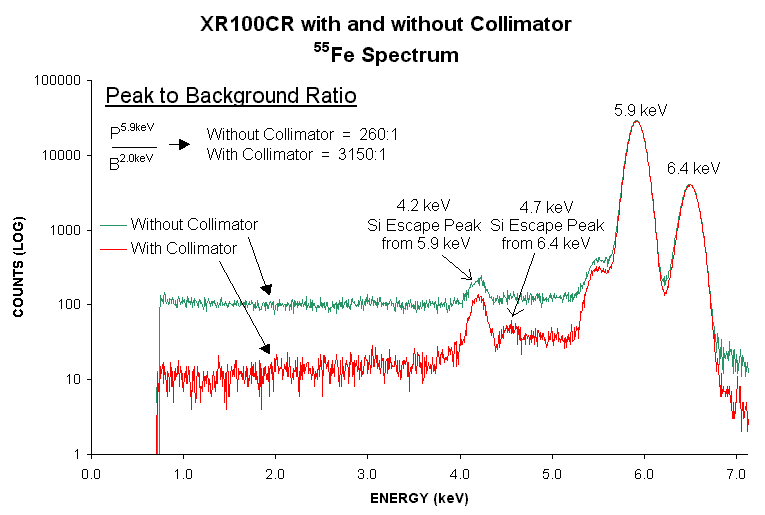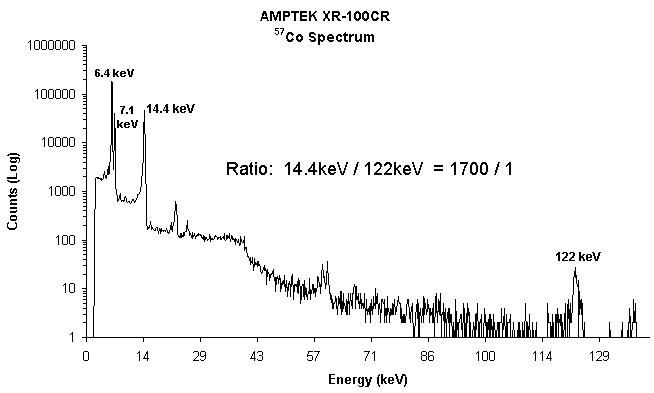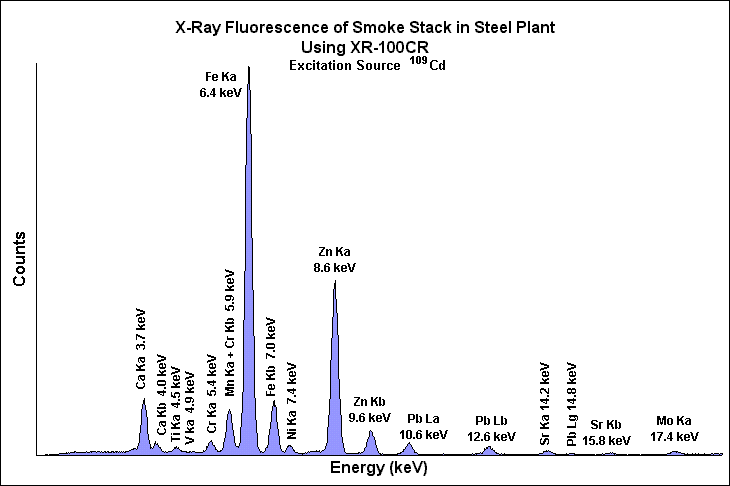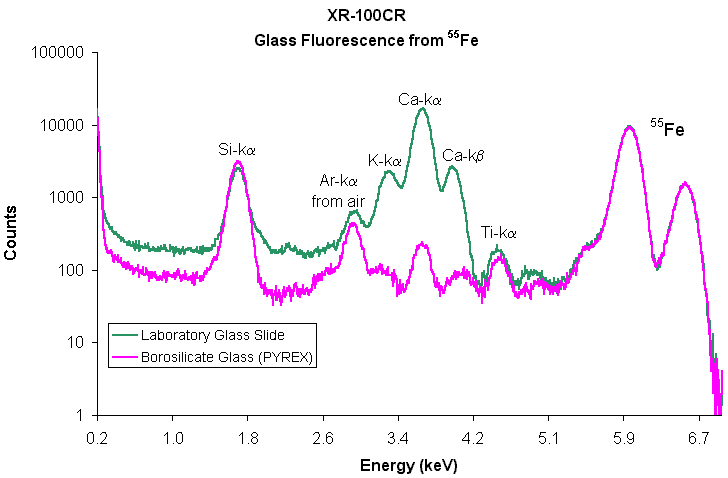

X-ray events that are produced near the edges of a detector may result into partial charge collection. Hence, a typical "tail" is observed at the low energy side of an energy peak. This "tail" is often called the "Background".
In the case of the 55Fe, the ratio of the counts at the 5.9 keV peak to the counts at about 2 keV is called the "Peak to Background Ratio" (P/B).
The XR-100CR with a 7 mm2 uncollimated detector exhibits a P/B = 260. However, the same detector with an external Aluminum collimator having a 2 mm diameter hole has a P/B = 3150. See figure.
The use of a collimator increases the signal to noise ratio of X-ray events that fall on the low energy tails of higher peaks, and thus increasing the counting statistics in observing such events. As shown in the figure, the 4.2 keV Silicon escape peak from the 5.9 keV is better defined with a collimated detector than with an uncollimated one. Furthermore, the 4.7 keV Silicon escape peak is clearly visible with the collimated detector, and not visible at all with the uncollimated detector.

Collimators can be made from material other than Aluminum, like Copper, Tungsten, Silver or other, provided the fluorescence peaks from the collimator material do not interfere with the anticipated measurement.
In cases where fluorescence peaks produced from the edges of collimators need to be minimized or eliminated, a multilayer collimator can be made by progressively using lower Z materials. Each layer will act as an absorber to the fluorescence peaks of the previous layer. The final layer will be of the lowest Z material whose fluorescence peaks are of low enough energy to be outside the anticipated X-ray detection range.
On special order the XR-100CR (7mm2 only) can be ordered with internal collimators made of Silver (Ag) or Tungsten (W).
The XR-100CR is an excellent detector for Mössbauer Spectroscopy. Since the thickness of the detector is only 300 Ám, it is very efficient at 14.4 keV and very inefficient at 122 keV. The Co57 spectrum shown here shows a detection efficiency ratio between 14.4 keV and 122 keV of about 1700/1. By using a thin Aluminum absorber between the detector and the source, the 6.4 keV and 7.1 keV peaks can also be eliminated, leaving the 14.4 keV as the only detectable energy peak.




Amptek X-Ray Chart (K and L emission lines)
Revised February 6, 2001